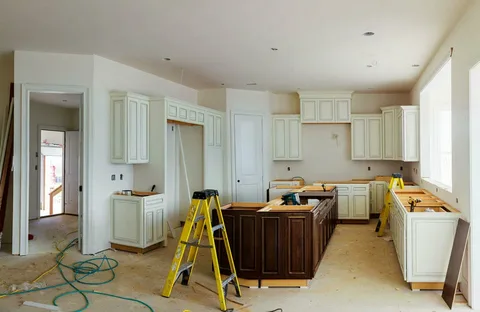Renovating your kitchen is an exciting journey that can breathe new life into your home. However, many homeowners dive into the process without realizing that the final bill can far exceed their original budget. While most people account for new cabinets, countertops, and appliances, there are hidden costs in kitchen renovation cost you might not expect—and they can add up quickly.
1. Structural Surprises Behind the Walls
Once demolition begins, contractors often uncover unexpected structural issues. This might include water damage, mold, outdated plumbing, or even pest infestations. These hidden problems must be addressed before new installations, and fixing them can significantly inflate your budget.
Example:
If your contractor finds old or faulty wiring that doesn’t meet current building codes, you’ll need to hire an electrician to bring everything up to standard. This can add hundreds or even thousands of dollars to your renovation cost.
2. Permit and Inspection Fees
Before you even start swinging a hammer, you might need to secure building permits depending on the scale of your project. Permits can cost anywhere from $100 to over $1,000, depending on your location and the extent of the work.
Additionally, certain stages of the renovation might require inspections. If something doesn’t pass the first time, you’ll need to make corrections and pay for another inspection—an expense many people don’t see coming.
3. Changes in Material Costs
Material prices are not always stable. From lumber and tile to plumbing fixtures, the cost can fluctuate due to supply chain issues, inflation, or demand surges. These changes can affect your bottom line, especially if you’re working with a tight timeline and can’t wait for prices to stabilize.
4. Living and Eating Adjustments
One of the hidden costs in kitchen renovation you might not expect is the impact on your daily routine. If your kitchen is out of commission for several weeks, you may need to eat out or rely on takeout more than usual. These small expenses accumulate quickly, turning into a significant and often overlooked cost.
5. Upgrading Adjacent Spaces
Renovating your kitchen may reveal the need to update nearby areas for aesthetic continuity. For instance, a modern kitchen might clash with an outdated dining area, prompting you to spend more to refresh adjacent spaces. While technically not part of the kitchen, these upgrades are often necessary to maintain the home’s overall visual harmony.
6. Last-Minute Design Changes
As the renovation progresses, you might change your mind about materials, finishes, or layouts. These adjustments can lead to restocking fees, additional labor costs, or even delays in the timeline—all of which can cause your expenses to spiral. This is another hidden cost in kitchen renovation you might not expect but is quite common.
Conclusion
While dreaming about your perfect kitchen, it’s easy to focus on the obvious costs and overlook the less visible ones. However, being prepared for the hidden costs in kitchen renovation you might not expect will help you avoid unpleasant surprises and stick closer to your budget. Always allocate an extra 15–20% in your budget for contingencies, and work with a reputable contractor who can help you plan for the unexpected.


